Conquer CIRS with Mold Poisoning Treatment in Charleston, SC
Experiencing mold toxicity is a terrifying thought for most people. Although it may seem like an interesting concept for a medical drama, nobody wants to experience the effects of mold exposure firsthand.
Mold is a fungus that thrives in wet environments, such as under tiles, wood floors, and ceilings, pipes, and roofs. While several types of mold exist, some are more hazardous than others, and some individuals may be allergic or sensitive to mycotoxins, the toxins that mold naturally produces. Exposure to excessive amounts of mold, or the types of mold that trigger health problems, can lead to mold toxicity and even CIRS – Chronic Inflammatory Response Syndrome. This acute and chronic systemic inflammatory response syndrome is typically acquired after exposure to mold or other producers of biotoxins, usually from damaged water buildings.
If you believe that you’re suffering from mold toxicity or mold illness, it can seem like the world is folding in on you. No matter what you do, your symptoms persist, lowering your quality of life and eliminating your peace of mind. Fortunately, there is reason to be hopeful: Proactive Wellness Centers now offers a research-backed, highly effective mold illness poisoning treatment in Charleston, SC for men and women just like yourself and your children as well if they have been impacted.
Understanding
CIRS and Mold Toxicity
CIRS and mold illness are on the rise, and accurate diagnosis of the issue plays a major role in this trend. Thanks to Dr. Ritchie Shoemaker, there is a huge body of evidence that covers diagnosing and treating patients with CIRS. Dr. Lawson is one of less than 30 practitioners in the United States that are fully certified by Dr. Shoemaker for diagnosing and treating CIRS. The body of evidence by Shoemaker and many associates is the largest body of scientific evidence that is published in major medical journals. Around 80% of CIRS/Mold cases are caused by indoor air contaminated with mold toxins and other triggers. However, it's important to note that CIRS can also be caused by biotoxin producers such as cyanobacteria and a marine dinoflagellate that produces the Ciguatera toxin found in certain types of fish.
When mold or biotoxins are not processed effectively, a series of biochemical changes known as the Biotoxin Pathway occur. Genetic studies have revealed that approximately 24% of individuals have a genetic makeup that makes them susceptible to developing an illness related to mold or biotoxins. The remaining 76% of the population can typically eliminate these toxins from their system and avoid the development of the Biotoxin Pathway that can lead to various diseases.

CIRS and Mold Poisoning Misdiagnosis
CIRS and mold exposure symptoms overlap with many other chronic illnesses, which makes diagnosis challenging and can even lead to missed diagnosis of CIRS. Based on research from Proactive Wellness Centers, CIRS is frequently misdiagnosed. Some of the most common misdiagnoses include:
- Lupus
- Chronic Pain Syndrome
- Fibromyalgia
- Parkinson’s Disease
- Multiple Sclerosis
- Chronic Fatigue Syndrome
- PTSD
- More
Lyme disease, in particular, is often misdiagnosed. We have treated a number of patients whose symptoms were in line with Lyme disease. Fortunately, we were able to confirm the presence of CIRS and mold and were able to successfully help those patients using CIRS treatment in Charleston, SC.
Note that many of these patients have CIRS and Lyme disease and in that case, it is necessary to treat both in order for full recovery. Treating one or the other will invariably leave the patient with debilitating symptoms and even more frustration with their medical team. At Proactive Wellness Centers, we are skilled In diagnosing and treating both.
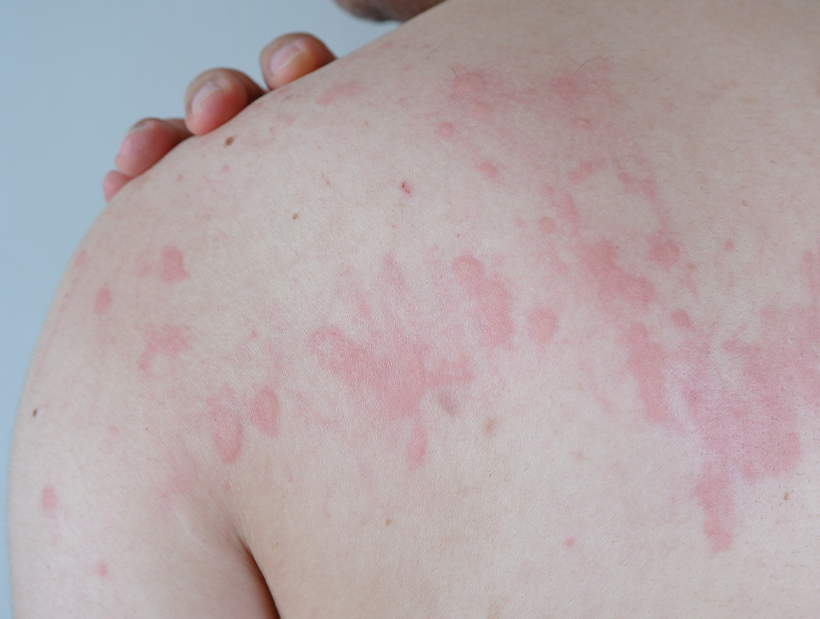
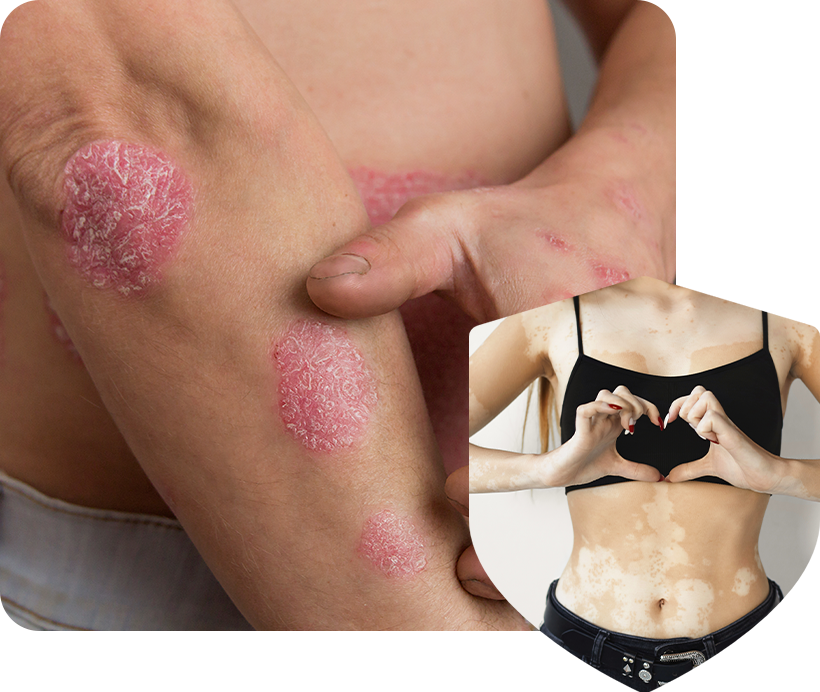
CIRS and Mold Poisoning Symptoms
If you’re reading this page, chances are you’re concerned that you might have CIRS or some form of mold poisoning. You may be wondering what you have – is it CIRS, or is it something else like Lyme disease? We can’t provide the answer to that question without consultation and testing at our wellness center in Virginia. However, there are common symptoms of CIRS and mold toxicity you should know.
Some of the most common symptoms of CIRS include:
- Fatigue
- Decreased Word Finding
- Headaches
- Difficulty Concentrating
- Morning Stiffness
- Tremors
- Excessive Thirst
- Tingling
- Night Sweats
- Frequent Urination
- Confusion
- Mood Swings
Proactive Wellness Centers’
Tools for Diagnosing Mold Sickness and CIRS
Identifying and confirming if a patient is being impacted by CIRS and identifying the cause and source of the biotoxin are the two main steps in diagnosing CIRS and Mold Exposure. To diagnose CIRS and Mold Exposure, the following diagnostic tools are commonly used:
To learn more about the debilitating symptoms of mold sickness and to find out whether you have CIRS or something else, contact Proactive Wellness Centers. Our team of medical professionals is here to help you every step of the way.

Hope for Patients with CIRS: Proactive Wellness Centers’ Mold Illness Treatment in Charleston, SC
Our approach to treating CIRS utilizes integrative and functional medicine, The Shoemaker Protocol along with the latest evidence-based approaches to treating mold illness and the related secondary issues that it causes. We begin by utilizing advanced diagnostics to confirm the presence of the condition and identify the specific environment causing continued exposure to biotoxins. Next, we take a stepwise approach to halt the progression of the disease, eliminate biotoxins from the body, and reverse any damage to cellular structures. Our goal is to help patients achieve a full recovery.
To do this, we not only have to identify the primary condition like CIRS or Lyme disease, but we then have to continue looking to see if you have any of the common secondary conditions like reactivated EBV, Mast Cell Activation Syndrome (MCAS), and others. Once we understand the totally of your condition, then we can implement a treatment plan tailored for you. Yes, it will leverage the Shoemaker protocol, but we have found that we have to extend the protocol to cover the secondary issues that we uncover.
The steps we follow to reach that goal include:
- VIP
- TGF Beta 1
- MMP9
- ADH
- Antigliadin
- Androgen Imbalance
- C4a
- More
- Barley
- Cottonseed
- Peanuts
- Corn
- Black Pepper
- Figs
- Rice
- Bread
- Beans
- More

Fibromyalgia, Lupus, Chronic Fatigue, and Chronic Pain Syndrome are examples of illnesses that are often diagnosed without such confirmatory tests. If you are experiencing unexplained health issues or have been exposed to water-damaged buildings, it is possible that you are suffering from CIRS or a mold illness.
The good news is that we can diagnose and address this disease with a mold illness treatment program in Charleston, SC tailored to your body and your symptoms. That way, we can help you regain your health as soon as possible.
Be Wary of These
5 Symptoms of Mold Exposure
Mold spores can easily be brought into your home on your shoes or clothing or through open windows or doors. If these spores can find a warm, damp, humid environment, they can begin to multiply. Soon, your home can be filled with toxic mold. If you think mold has invaded your home or another environment, like in an office or warehouse, it’s important for you to know about the symptoms.
Unfortunately, diagnosing mold issues can be exceptionally difficult. But why? The answer can be quite frustrating.
Understanding the Difficulty of Diagnosing Mold Symptoms
Many doctors fail to recognize the impact of mycotoxins emitted by certain indoor mold species, which can lead to chemical and inflammatory reactions. While conventional medicine acknowledges that mold can cause allergies, it may overlook this crucial aspect of mold-related health issues.
This can happen for several reasons:
- Standardized treatment protocols for mold toxicity are offered mostly by Functional/Integrative physicians as the conventional physicians are not on board despite over 20 years of published research. Due to this issue, patients spend precious months/years going from doctor to doctor in the conventional channel with no answers.
- Though ERMI testing has been accepted in the integrative/functional medical community, there isn’t a “gold standard” in mold testing that is universally accepted.
- Mold symptoms can manifest in vastly different ways depending on the patient.
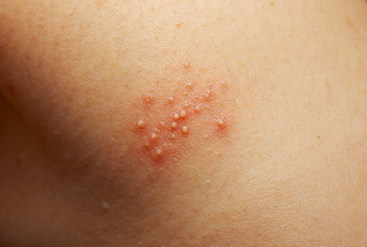
After understanding the points above, it’s no wonder that mold poisoning can be hard to diagnose. Fortunately, integrative and functional holistic medicine providers and wellness centers like Proactive Wellness are flipping the proverbial script. Unlike traditional clinics, our team considers environmental factors that can affect patient health and has advanced training to provide mold poisoning treatment in Charleston, SC.
Now that you understand why mold symptoms are so hard to diagnose let’s take a closer look at five of the most common indicators of mold sickness.
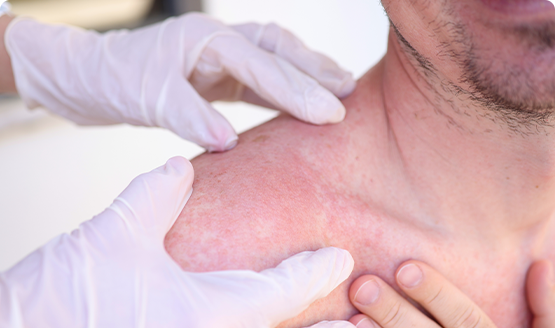
Fatigue
Fatigue is probably the number one symptom of well over 90% of CIRS patients. The level of fatigue varies from 5 on a 10 point scale all the way to 10 on a 10 point scale. Many patients can no longer work or remain productive as in the worst cases, the fatigue is overwhelming. College students living in moldy dorms frequently have to drop out of school until the illness is treated effectively. Older adults have to retire or stop working due the fatigue. If you have overwhelming fatigue, CIRS may be a major contributor to your illness.
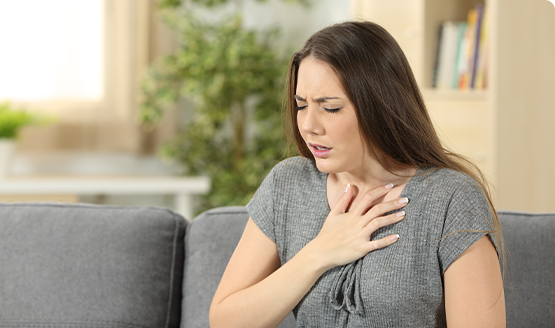
Breathing Problems
Exposure to mold can cause a host of respiratory problems, such as breathing difficulties, allergies, and asthma, especially in individuals with a weakened immune system. Mold can worsen asthma, irritate the nasal passages, lungs, and throat, and lead to symptoms such as wheezing, coughing, sneezing, sore throat, and nasal congestion. Other health issues such as hypersensitivity pneumonitis, sinus congestion, allergic rhinitis, asthma, and allergic bronchopulmonary aspergillosis have also been associated with mold sickness.
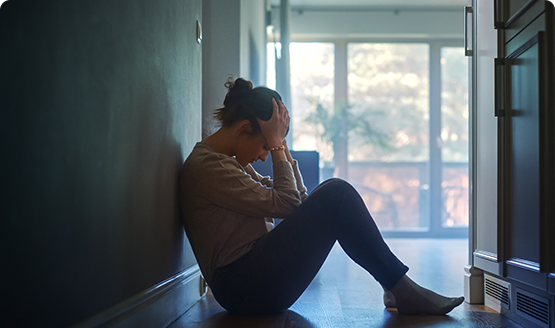
Sadness and Depression
Mold can cause a variety of illnesses that can show up in different ways, such as psychological symptoms like anxiety, depression, insomnia, concentration problems, and memory loss. It has been reported that nearly 40% of people who live in moldy homes experience depression. Researchers suggest that exposure to toxic mold and dealing with the physical symptoms of mold illness can contribute to mental health issues.
Due to this phenomenon, many mold patients are given antidepressant medications in the conventional channels.
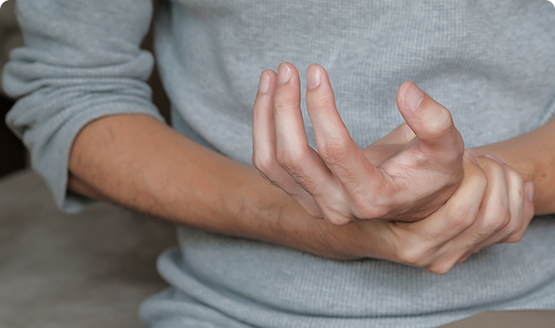
Feeling “Pins and Needles”
Numbness, twitching, or tingling in the extremities, such as hands, feet, legs, and arms, is another symptom of mold illness. The sensation is similar to pins and needles, which are often felt when the body is held in an uncomfortable position for a long time. While this sensation can indicate serious nerve damage or disease, it can also be a symptom of mold sickness.
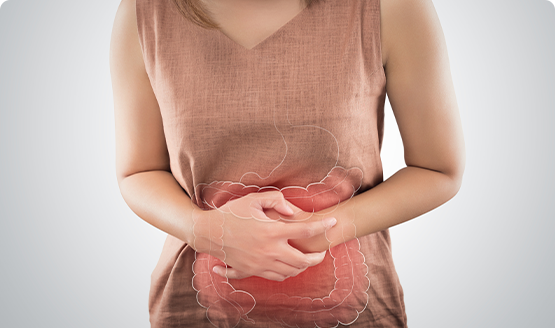
Digestion Problems and Disorders
When exposed to mold, individuals may experience various digestive problems. Some may lose their appetite, leading to unintentional weight loss. Others may suffer from stomach pain, nausea, diarrhea, and vomiting. Furthermore, the influx of mold spores may trigger systemic inflammation, causing bloating and weight gain due to the digestive system's exposure to harmful mold.

Ask Us Anything
Top Tips for
Controlling Mold in Your Environment
It's not possible to completely eliminate all mold and mold spores from your home or place of work. However, since mold spores need moisture to grow, the best way to prevent or get rid of growth is to reduce the moisture in your environment. If you already have mold growing there, it's important to clean it up and address the issue causing dampness. If you only clean up the mold and don't address the underlying problem, the mold is likely to return.
Here are some tips to help reduce moisture throughout your home or office:
- Use A/C or Dehumidifiers. This is especially important if you live in a hot, humid area of the United States.
- Ensure A/C drip pans are clean, dry, and obstruction-free.
- Thoroughly dry areas that are damp or wet within 48 hours.
- Be sure to install insulation in cold areas like your home’s exterior walls and windows. Doing so will reduce condensation.
- Work with an HVAC company to check your HVAC system. Doing so can help ensure your unit is removing as much humidity as possible.
- Keep the humidity in your home below 60% whenever possible.
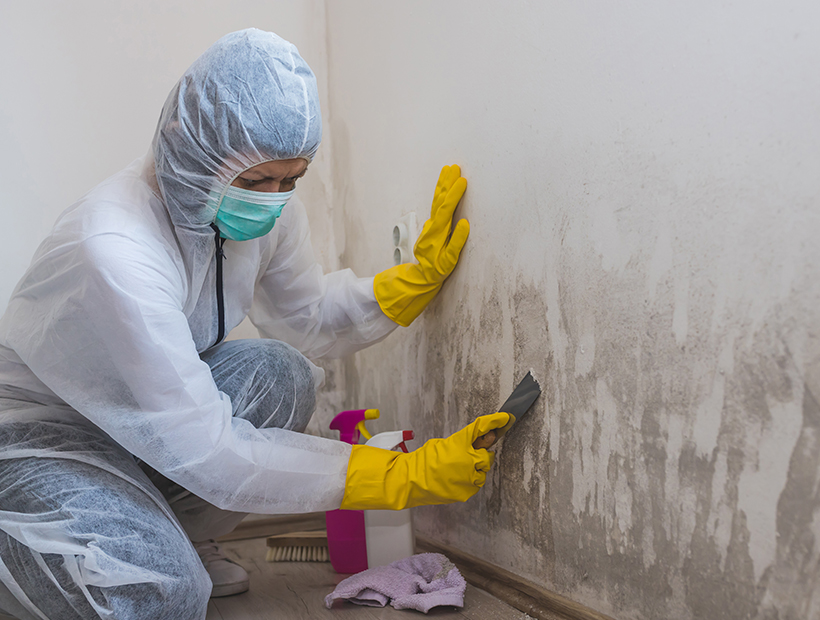
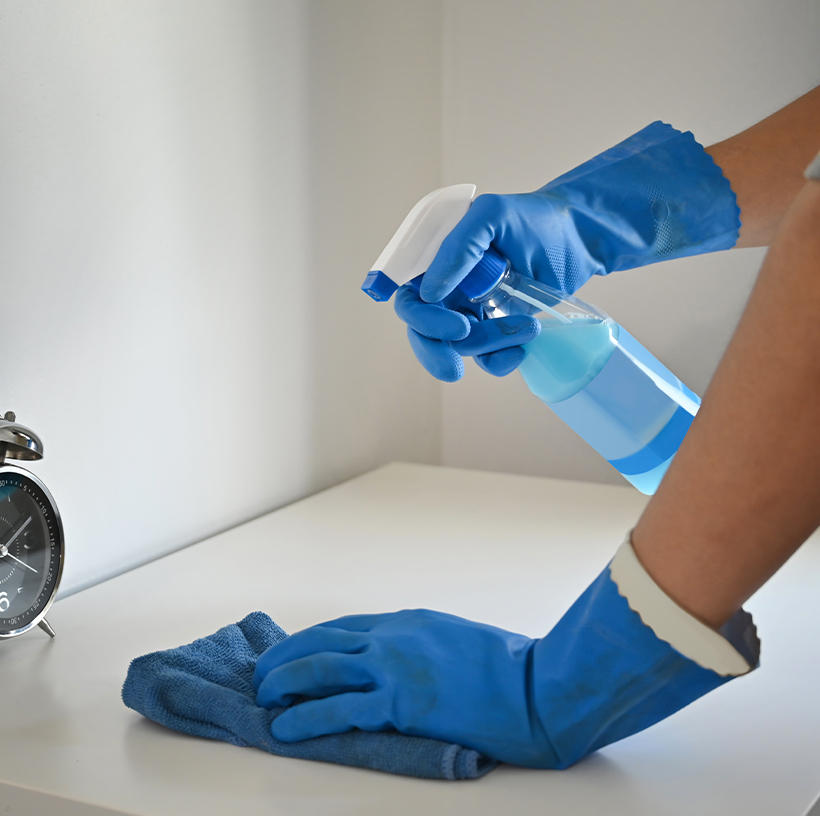
Here are some tips to help reduce moisture in your kitchen:
- Check for leaks near your ice makers, sinks, and anywhere else water is present.
- Make sure your exhaust fans are directing moisture outside, not into your attic.
- If you notice your appliances are causing moisture on windows and other surfaces, turn them off as soon as you’re done using them.
Here are some tips to help reduce moisture in crawlspaces:
- Use a plastic covering on the dirt in your crawlspace. Doing so will prevent moisture from saturating the ground.
- Ensure that your crawlspace or basement is ventilated well.
- Check your home’s gutters. Make sure they’re directing water away from your property, not toward your foundation or crawlspace.
Your Top Choice for
Mold Toxicity Treatment in Charleston, SC
Trying to “tough it out” through life with CIRS isn’t any way to live. If you’re suffering from the effects of biotoxin illness, you should know that there are solutions available to help you reclaim your health and your life. With the help of a can-do attitude, healthy living, and mold illness treatment from Proactive Wellness, there’s light at the end of the dark tunnel you’re trapped within. Contact our office today to get started on your first step toward recovery!

 (703) 822-5003
(703) 822-5003




